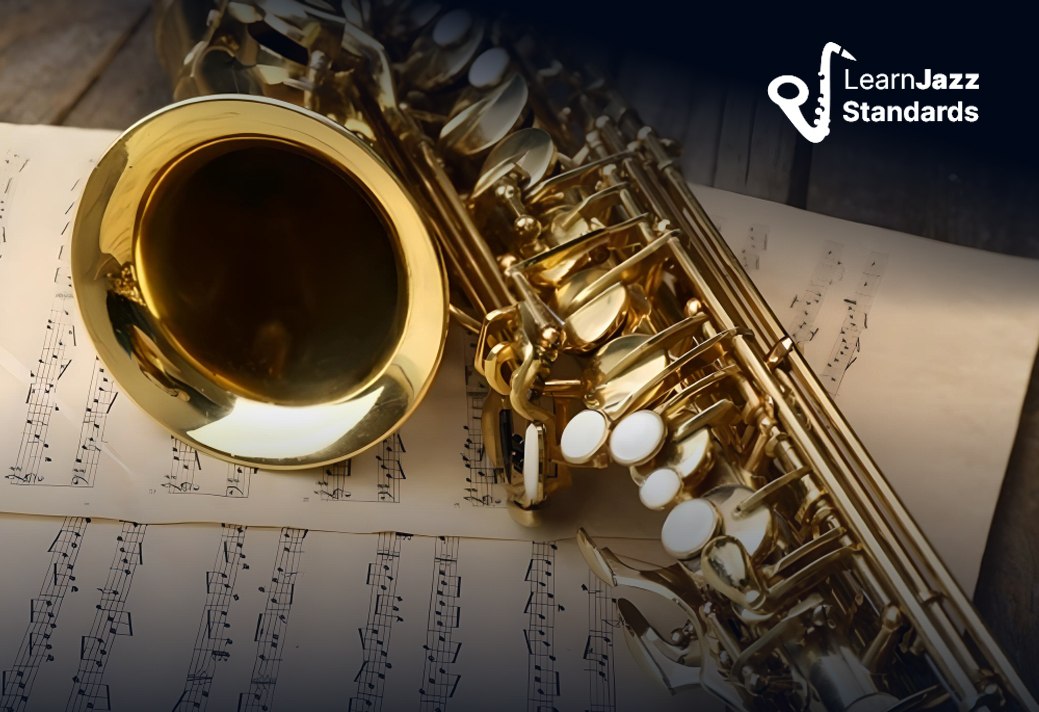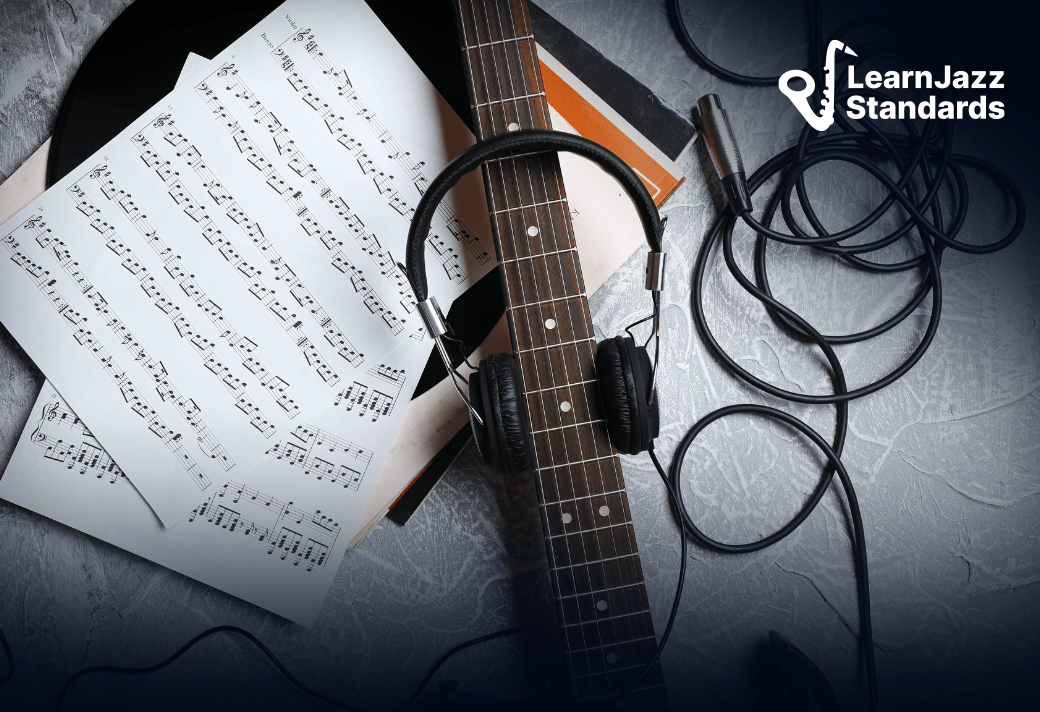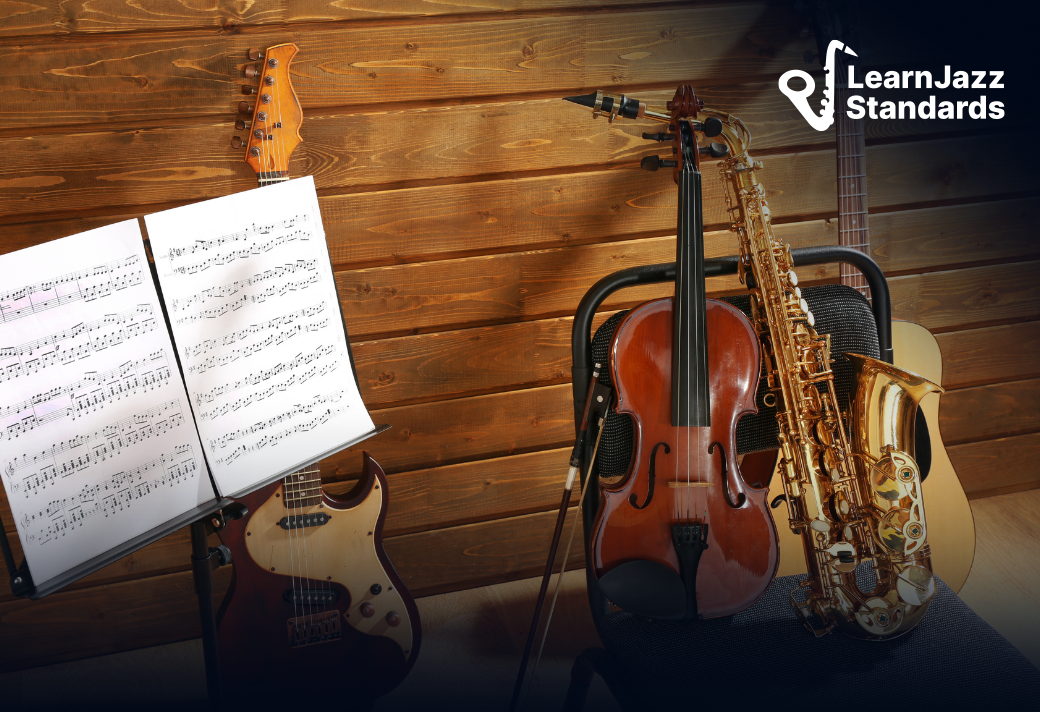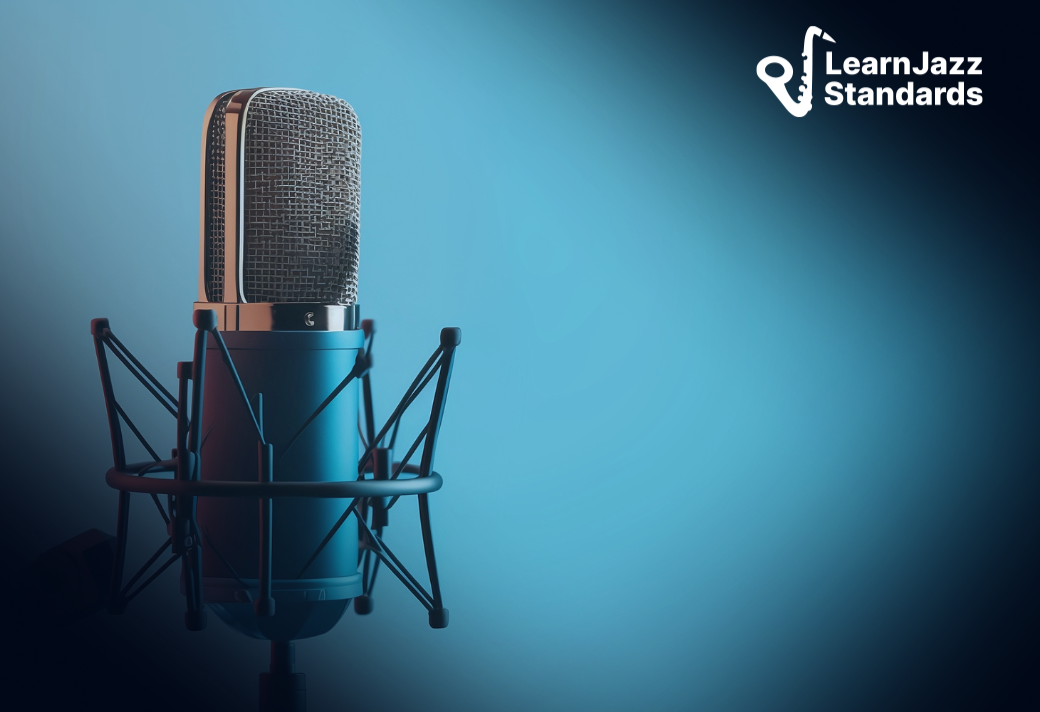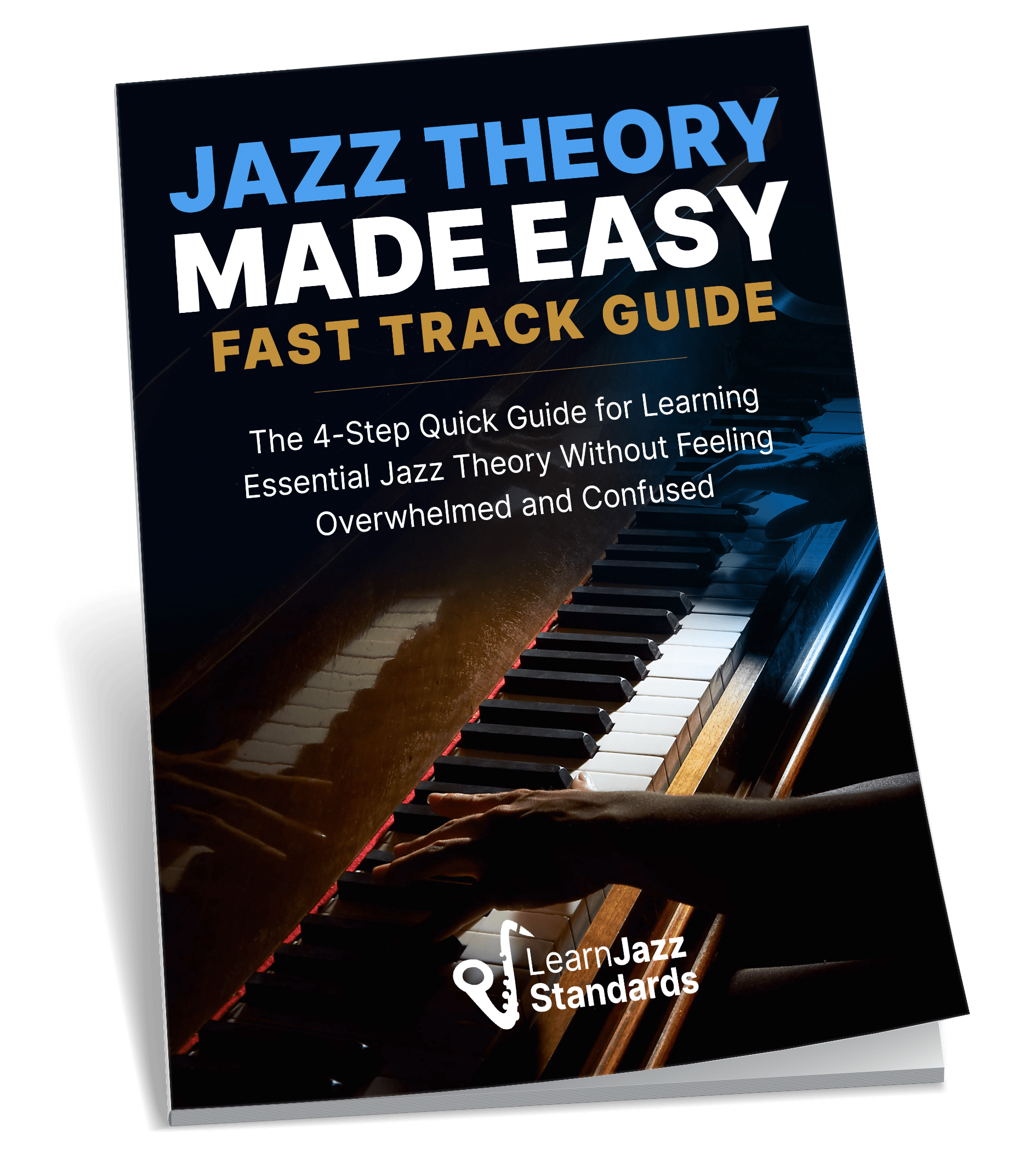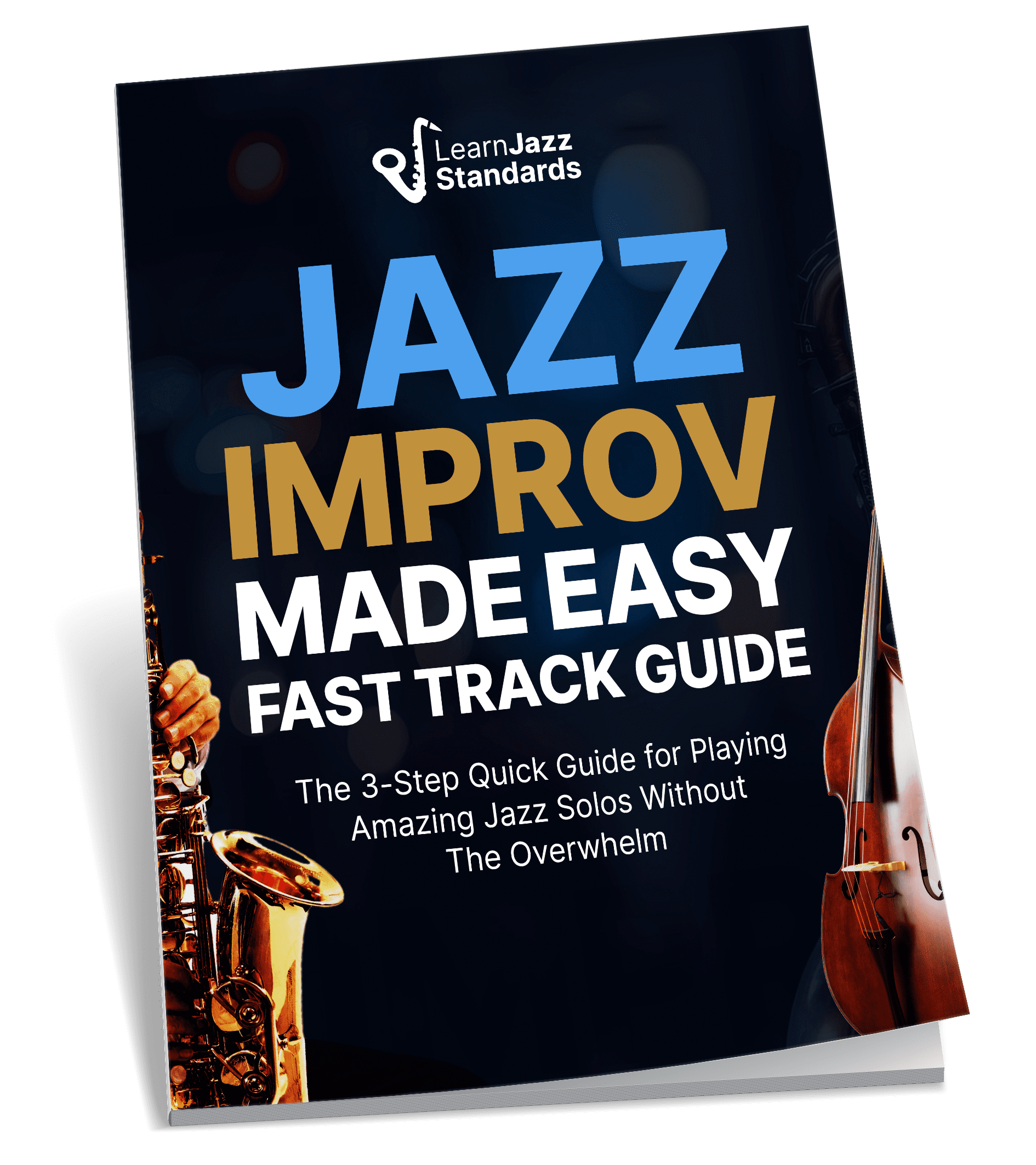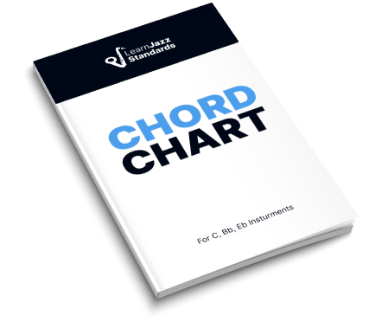In my time as a jazz musician, I’ve discovered that there is sometimes confusion regarding how to notate and interpret chord symbols. It’s a significant problem in the jazz world, and one that I want to address here. I hope that sharing my understanding and interpretation of chord symbols with you is useful and can help dispel some of the confusion surrounding jazz chord symbols.
The Confusion
Part of the underlying set of issues here is that the term jazz embraces a wide variety of musical styles from many different historical periods. Additionally, jazz started out as a primarily aural/oral (an “ear” or “illiterate”) tradition, and when jazz was first written down using music notation, musicians basically adopted the notation traditions associated with European classical music, which proved inadequate to the task in many ways.
When Western music notation didn’t have a way to notate something, many jazz musicians either simply didn’t notate it, or they invented their own system for how to notate it, which eventually lead to various schools of thought about notating jazz music and varying degrees of specificity in notated jazz compositions.
Further, the complicated reality of jazz both sonically and historically means that much of jazz theory and jazz’s musical notation have been put together somewhat haphazardly after the fact.
The resulting situation that all jazz musicians are aware of is that even the most detailed written scores, lead, sheets, and transcriptions of jazz music are notoriously imprecise and insufficient to capture what the music is sonically. Jazz music has thrived on innovation, and theorizing, explaining, and notating the music generally always lags behind actual performance practice.
There is so much nuance in jazz musicians’ approaches to bending notes, dynamically and timbrally shaping melodies, playing swung rhythms, experimenting around with the time feel, revoicing chords, etc., that it is nearly impossible to accurately capture what’s going on in a jazz performance with written music notation alone.
If you have any doubt about this, just try listening to any interpretation of a jazz standard while following along with a lead sheet for the tune you’re listening to. You will very quickly discover the discrepancies between what you hear in the music and what’s notated on the page. Obviously, lead sheets are extremely simplified and generic examples of notated jazz music and therefore are an easy target to criticize for being vague.
In fact, a lot of people might argue that the whole point of a lead sheet is to be intentionally vague and condensed so that it is short, simple, easy to read, and open to varied interpretations.
Bu regardless of how or why lead sheets are notated the way that they are, they are extremely common in jazz culture for a good reason, namely because they are valuable tools. Lead sheets can help us quickly learn, perform, and disseminate jazz’s standard repertoire of songs. But because jazz is so diverse and there are so many different schools of thought about how to notate, talk about, and explain jazz theory, we have the unfortunate situation where there is no clearly codified or standardized way to notate jazz music on lead sheets.
This is especially a noticeable problem when it comes to lead sheets, and it’s particularly obvious that there are many different and sometimes conflicting ways of notating jazz music’s harmonic progressions using chord symbols. If you peruse a few different versions of the many “Fake Books” and/or “Real Books” out there, you’ll quickly see that there are many contrasting ways to notate jazz harmony using chord symbols. Some chord symbols are very simple and generic looking, and others are much more specific, detailed, and complex.
With all this in mind, here’s how I’ve come to understand and interpret chord symbols as they appear in their various forms, and I hope this helps you navigate the sometimes confusing world of notated jazz compositions.
Triads vs. Extended Chords vs. Slash Chords
Jazz musicians very rarely play triads by themselves (except perhaps in the very earliest jazz styles, such as traditional New Orleans style jazz), so most of the harmonic vocabulary of jazz music is based around 7th chords and 7th chord upper structures over different bass notes (which is just another way of thinking about extended chords, or chords with 9ths, 11ths, 13ths, etc. – more on that below).
This is problematic, because in most contexts outside of jazz if a musician sees a chord symbol that is simple (like “C” or “C-“), they will interpret that to mean a basic triad (C major and C minor triads, respectively). For the sake of simplicity, some jazz musicians just write “C” as a chord symbol when they mean “Cmaj.7” – and similarly, some older charts and lead sheet will write just “C” when they actually want something more like “Cmaj.6.”
Even when a lead sheet does specify a chord symbol with more information such as “Cmaj.7,” of course a jazz musician rarely even takes this literally. Most players will automatically include at least one extension in most of their basic jazz voicings (such as a 9th or 13th over a major 7th chord, more on that below).
To further complicate matters, as jazz harmony has generally continually become more complex since the swing era, and as jazz theory and jazz education have steadily grown and developed as fields of study in the decades since the mid-20th century, many lead sheets and jazz composers/arrangers/musicians have adopted what are often called “slash chord” notation systems to further clarify and specify the voicings they intend to be played with their music. A slash chord indicates an “upper structure” (a complete chord by itself) played on top of a specified bass note using a slash symbol: “/” (more on slash chords below).
So how do we deal with the potential for confusion here? Here are my suggested guidelines for you to consider.
Triad Guidelines
If a chord is notated with just a letter, such as “C” (unless told otherwise by the composer/arranger/bandleader):
-
If it is outside a jazz context, assume it means “C major triad” (in root position, or in any inversion as long as someone is playing a “C” as the lowest note in the bass register).
-
In a jazz context, unless it’s a very old-fashioned, traditional New Orleans style song, it probably actually implies “Cmaj.7,” “Cmaj.9,” Cmaj.6,” or “Cmaj.6/9” and you can most likely play any of those options as long as the voicing doesn’t clash with the notes in the melody or the style of the song.
-
In your own composing/arranging/transcribing, I recommend avoiding this simple of a chord symbol unless you literally want just a C major triad. You can even be abundantly clear by specifying “C (triad)” or “C (triad only)” or some other similar variation in your chord symbol if you don’t want any extensions at all in the voicing. I believe that in general, the more clear and informative the notation, the easier it will be to execute the music with the minimal amount of explanation and potential confusion.
Generic and Common Jazz Chord Symbol Guidelines (7th Chords and Extended Chords)
If it is a common generic jazz chord symbol, added extensions are acceptable in most styles of jazz from about the 1930s onward.
For Major 7th chords:
-
“Cmaj.7” also means adding a 9th and/or a 13th is almost always acceptable. The only thing I would avoid is adding a natural 11th. This is highly uncharacteristic unless it is a modal “Ionian” chord sound, in which case it will most likely be made clear in the notation as “Cmaj.7(add4)” or “Cmaj.(11)” or “Csus4(maj.7),” etc. You can get away with adding a #11 in most jazz styles from the bebop era onward, as long as it does not conflict with the melody of the song or with the improviser’s harmonic/melodic vocabulary in that specific context/instance.
For Dominant 7th chords:
-
If it just says “C7” for example, adding a 9th or a 13th is almost always acceptable.
-
Generally, jazz musicians don’t alter dominant 7th chords unless they are resolving in a V-I bass motion (such as C7 for Fmaj.7 or C7 to F-7), in which case it’s usually acceptable to alter a dominant 7th even if there are no alterations indicated on the page.
-
If it says “C7(#11)” this almost never means C7alt. (which would be the 7th mode of
melodic minor – so C# melodic minor played from C). It almost always implies G melodic minor played from C (the 4th mode of melodic minor). Dominant 7(#11) chords are less likely to resolve V-I, as opposed to 7(b9) chords which almost always resolve V-I.
-
If it’s a dominant 7th in a modal context, and especially if it’s a 7(sus4), it strongly implies no alterations, and using the Mixolydian mode is most likely most appropriate (also, all diatonic extensions are usually acceptable in the case of a modal dominant 7th chord not resolving V-I). But of course, in practice, improvisers can always alter chords on the fly as long as everyone is listening to each other and they are flexible in their approach and willing to follow each other harmonically.
-
7(sus4) chords can come in many forms and different situations imply different corresponding scale choices. One thing to watch out for is the fact that a 7(sus4) often doesn’t have a 3rd in the voicing (though usually, a natural 13th is present by default), and so in some situations, a natural or a flatted 3rd could work while improvising over this chord. So actually Dorian or Mixolydian usually work over 7(sus4) chords, unless it’s a:
-
7(sus4,b9,b13) which strongly implies a Phrygian sound, or perhaps Phrygian natural 3 (the 5th mode of harmonic minor)
-
Or a 7(sus4, b13) which might imply Mixolydian b6 (the 5th mode of melodic minor – also called “Aeolian natural 3”)
-
Or 13(sus4,b9) which implies Mixolydian b2 (the 5th mode of harmonic major)
-
-
Dominant 7(#5) could imply 7(alt.) [Note: maybe it actually means “7(b13)” in which case altered dominant or Mixolydian b6 are probably most appropriate], but in some cases it could also imply the whole-tone scale sound, so as always, the melody of the song might suggest one option more strongly over the other, but ultimately improvisers and comping instruments must agree in the moment by listening to each other and trying to settle on an option that fits what’s happening musically.
-
For 7(b9) chords: “7(b9)” is the most common and basic generic altered dominant chord symbol. Whether it’s got a b13 or a natural 13 is up to the interpretation of the improviser and the comping instruments unless it’s specified in the chord symbol or in the melody of the song itself [and even if a 13th is specified in the melody of a song, you can vary the 13th you choose to play over 7(b9) chords when comping during improvised solos. There is nothing stopping you from varying it as long as everyone does it together]. This is an important distinction because the quality of the 13th might suggest a different scale that fits best with it: dominant 7(b9, b13) strongly implies the altered scale [the 7th mode of melodic minor – so C# melodic minor played from C for C7(b9,b13)], whereas 7(b9, 13) with a natural 13 more strongly implies the diminished scale starting with a half step (or perhaps even Mixolydian b2). So when you’re comping a tune and the quality of the 13th of a 7(b9) chord is not super clear to begin with, I would err on the side of leaving out the 13th from your voicings altogether so that the improviser can make the scale choices they want without potentially clashing with the chordal accompaniment. If you happen to hear which option the improviser is using, you can of course then go to a voicing which supports that option. And of course, vice versa, if a chordal instrument does play a 13th in the voicing, the improviser can pick the scale that fits the voicing best if the improviser is listening carefully and has the ability to distinguish between the various upper structure options for 7(b9) chords.
For Minor chords:
It’s a bit complicated but the context will usually clarify the situation. C-7 for example almost always implies the Dorian mode, but sometimes a chord symbol will just say “C-“ in a jazz context where clearly it is meant to be a fuller voicing than a mere C minor triad. If you just see “C-“ followed by “F7” in the context of a 2-5-1 in a jazz tune, assume it’s C-7 (with an added 9th as an appropriate addition) with a corresponding C Dorian minor scale fitting best over the chord.
However, if it’s “C-“ and it’s the tonic of a 2-5-1 (especially a minor 2-5-1), then it is much vaguer.
C-(maj.7), C-(b13), C-7, and C-13 are all options in this case, depending on the context. C-(maj.7) implies a melodic minor or harmonic minor scale, C-7(b6) or C-9(b13) imply C Aeolian, and C-7 or C-13 implies C Dorian minor (although in some cases C-13 could instead imply C melodic minor).
Again, the melody of the song might suggest one option more strongly over the other, but ultimately improvisers and comping instruments must agree on the fly by listening to each other and trying to agree on which option fits what’s happening musically.
For Half-diminished or Minor 7 (b5) chords:
The 9th should generally be avoided unless it’s specified as a natural 9 or b9. But 11ths will generally work while voicing these chords. Like the 13th on a dominant 7(b9), the 9th might be natural or flat depending on the scale choices of the improviser and the melody of the song.
By leaving the 9th out of the voicing, the improviser can choose to either play Locrian or Locrian natural 6 (the 2nd mode of harmonic minor) – both of which have a b9 – or Locrian natural 2 (the 6th mode of melodic minor) over half diminished chords.
Again, the melody of the song might suggest one option more strongly over the other, but ultimately improvisers and comping instruments must agree in the moment by listening to each other and trying to settle on an option that fits what’s happening musically.
-
7(b5) actually often actually implies “maj.7(#11)” and of course 9ths and 13ths are usually acceptable additions.
-
Likewise, dominant 7(b5) actually often really means “7(#11)” – the chord that usually corresponds to the Mixolydian #4 (the “Lydian dominant” mode – the 4th mode of melodic minor) and of course 9ths and 13ths are usually acceptable additions. But in some cases 7(b5) might imply the whole-tone sound.
-
(maj.7) or maj.7(#5) usually mean 9ths are acceptable, but 13ths should probably be avoided because they will clash with and detract from the strength of the #5 which defines the augmented sound. Depending on the situation, a #11 might be appropriate, but sometimes it also works to play Ionian #5 (the 3rd mode of harmonic minor), so it is probably best to leave out an 11th from the voicing so the improviser has more scale options.
Slash Chord Guidelines
Slash chords are probably the most modern and most specific types of chord symbols jazz musicians use. The interesting thing is that essentially all 7th chords and extended chords could ultimately be conceptualized and notated as slash chords. For example, “Cmaj.7” could be thought of as a E-/C (meaning literally an E minor triad played on top of a C bass note). Or “Cmin.9” could be thought of and played as Ebmaj.7/C.
In my experience, slash chords are usually interpreted as being more precise and inflexible. They are not open to interpretation as much as generic common jazz voicings. Slash chords essentially force chordal instruments to play a more specific voicing in many cases, and therefore they should be read more literally than other chord symbols, in my opinion.
By “read more literally” I mean that when voicing the first part of a slash chord (the upper structure), it should NOT be assumed that any extensions or alterations are acceptable. The upper structure of a slash chord generally should be the simplest interpretation of what’s literally notated.
So, for example:
-
“Bb/C” literally means: a Bb major triad – in any inversion – played over a C bass note (essentially giving you a stripped down C9(sus4) voicing)
-
Abmaj7(b5)/Eb means: the notes Ab, C, Ebb(a.k.a. D natural), G played over an Eb bass note [giving you a modal Ionian Eb major sound – an “Ebmaj.7(add4)” sound]
-
E-7(b5)/F# means literally play the notes E, G, Bb, and D only over an F# bass note (which is an excellent F#7(b9,b13) voicing)
So I recommend using slash chords often, especially when you have a very specific voicing in mind that captures the sound of the harmony you want to communicate to performers.
Here are some more examples:
-
C maj. 6 can be clearly communicated as A-7/C
-
C maj. 9 can be notated as: E-7/C
-
C maj. (#11) could be E-7(add9)/C or B-7/C or Dmaj.6/C
-
C maj. 7 (#5, add 9) could be E7/C
-
C7(sus4) could be written as “Bb/C” or “G-/C”
-
C13 could be “Bbmaj.7(b5)/C
-
C7(b9,b13) could be Bb-7(b5)/C
-
C13(b9) could be Bb dim.(maj.7)/C
-
C-13 could be Ebmaj.7(b5)/C
-
C Phrygian could be Dbmaj.7(b5)/C
-
C-(b6) or C-(b13) or C Aeolian could be Abmaj.7/C
-
C-7(b5) could be Gbmaj.7(b5)/C
-
C-9(maj.7) could be Ebmaj.7(#5)/C
Hopefully, you see the possibilities slash chords afford for precision and clarity from these examples. Generally, you can find a triad or some type of 7th chord and put it over bass note to very specifically and clearly arrive at a voicing that captures just about any type of sound you have in mind.
Notating these ideas using slash chords eliminates a lot of the guesswork out involved in trying to figure out what specific harmony the composer/arranger/bandleader has in mind.
Of course, if you don’t have something specific in mind and you want the harmony to be left more open to the interpretation of the performer, you always have the option of reverting to simpler, more vague, open-ended generic chord symbol notation as well.
I know this is a lot of information to digest, and of course my way isn’t the only way to interpret or conceptualize chord symbols, but the guidelines I’ve described above have been really helpful for me as I’ve tried to navigate lead sheets, solo transcriptions, arrangements, and original compositions from various styles and eras of jazz and popular music. I hope you find these guidelines helpful as well.


